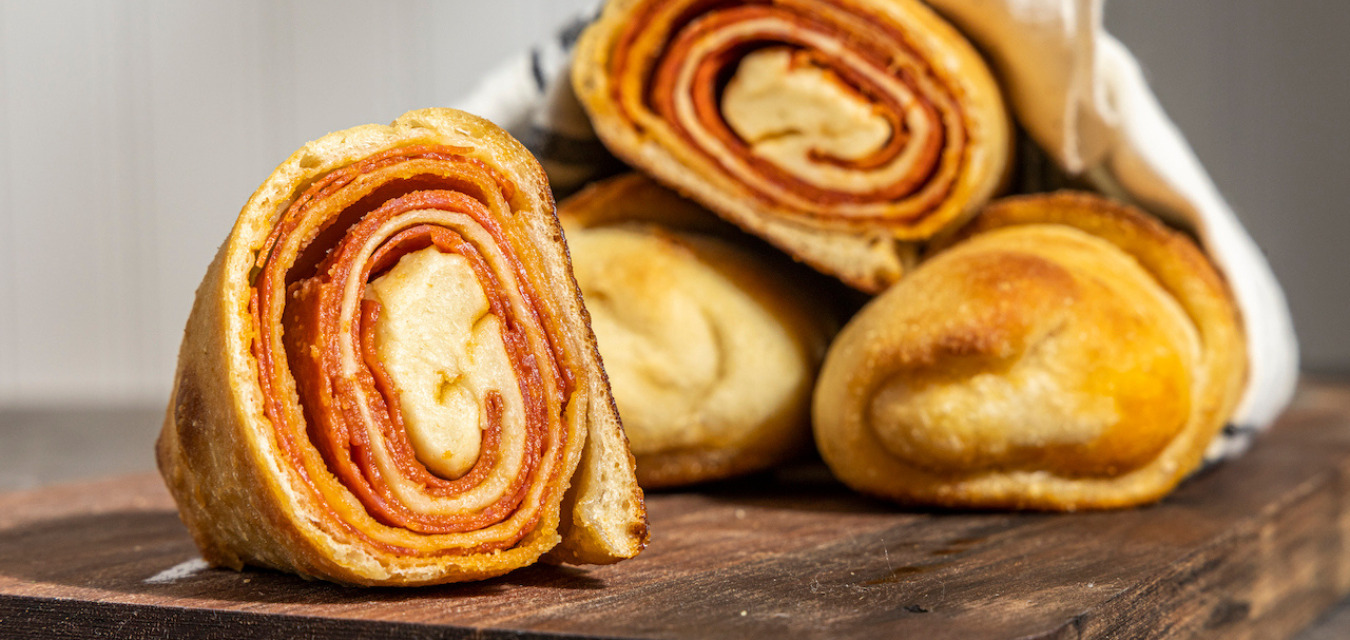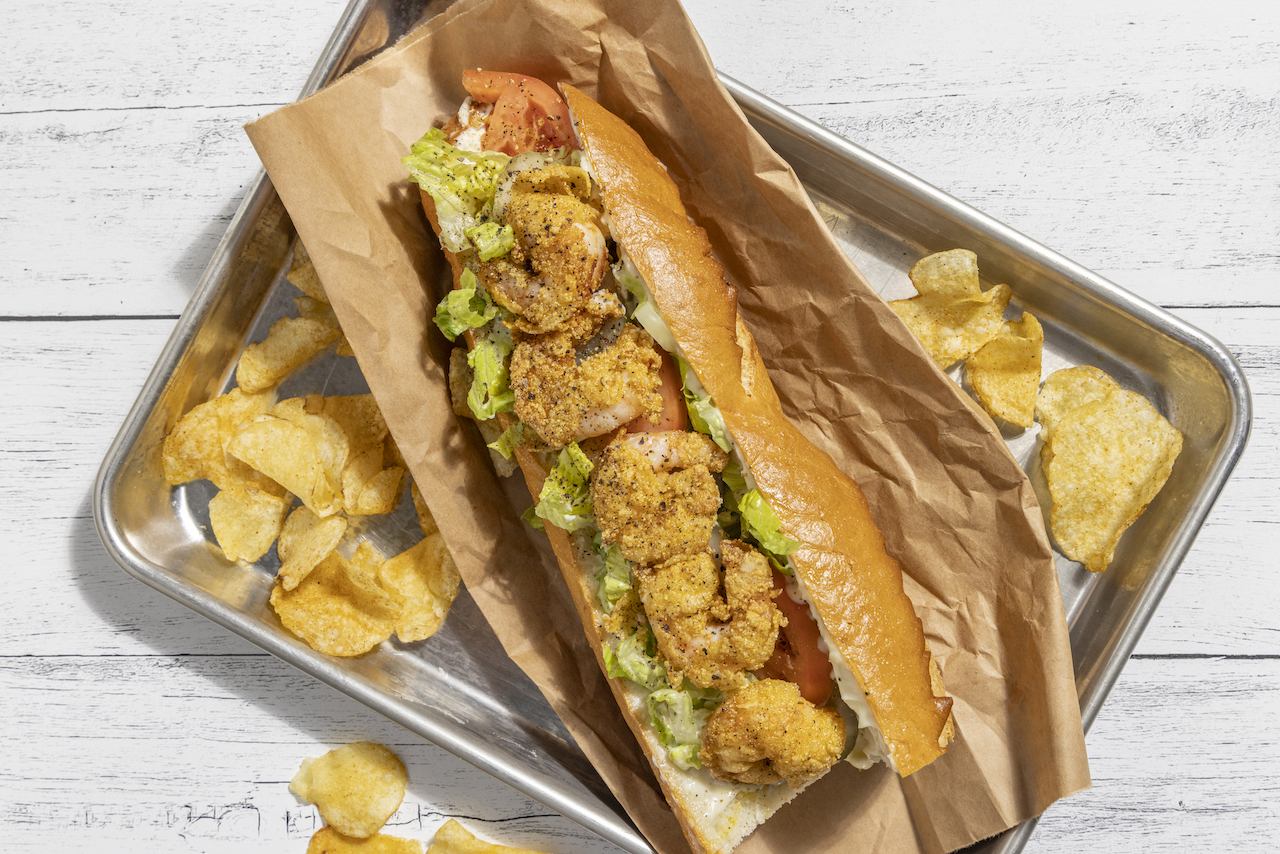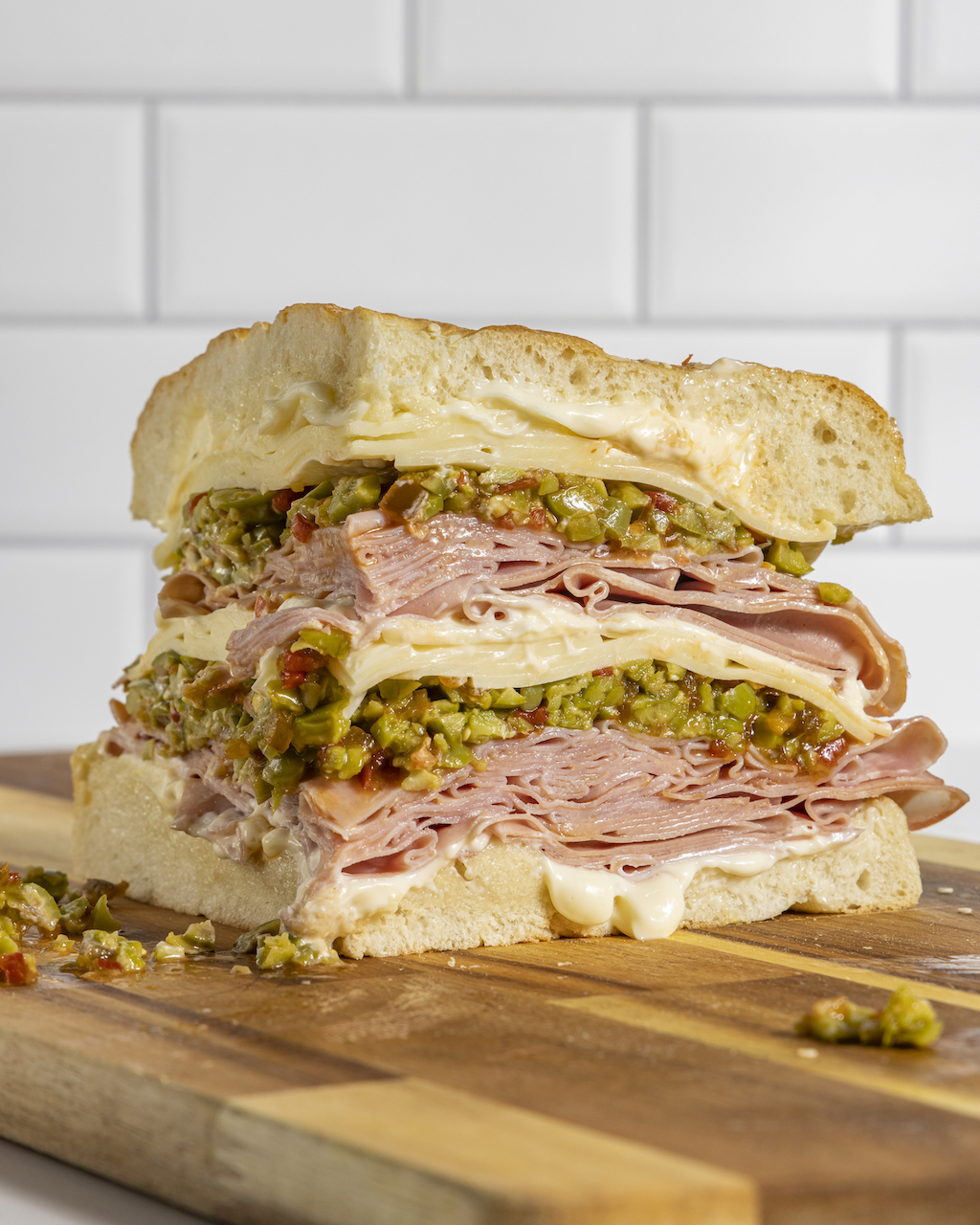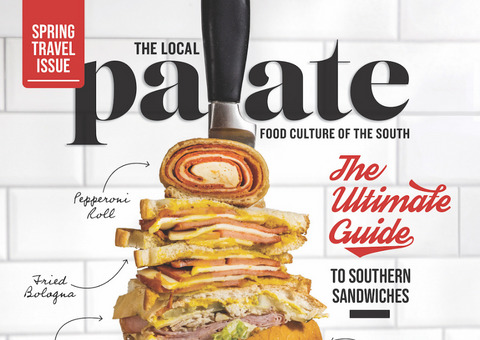In the Local Palate’s Spring travel issue, our editors explore the South through its iconic sandwiches. This one takes us to coal mines of West Virginia where pepperoni rolls represent the area’s rich Italian heritage.
Stop Three: Pepperoni Rolls | West Virginia
Pepperoni rolls are simple in concept: spicy pepperoni, freshly baked bread, and some magic in the oven combine to create a delicious, portable snack. But its history, much like that of its home state of West Virginia, is complex, rooted deep in the coal mines that shaped much of the Appalachian region in the 20th century. Immigrants from Italy flocked to the area in search of work in the coal mines in the 1900s, bringing with them their cultural heritage and food traditions. Among the culinary delicacies were fresh Italian breads, salami, peppers, and cheeses. With miners working hundreds of feet underground mining coal, it wasn’t uncommon for Italians to bring a hunk of bread and a stick of pepperoni for lunch to fill their bellies with the comforting flavors of home.
Giuseppe Argiro, one coal miner who emigrated from Calabria, Italy, set out on a new career path by opening up an Italian bakery in Fairmont, West Virginia. At what was then known as People’s Bakery, Argiro drew inspiration from his time underground and combined that piece of bread and a few sticks of pepperoni to create the pepperoni roll sometime between 1927 and 1938. Argiro is most commonly credited with commercializing the pepperoni roll, though it’s likely it was the wives of coal miners in home kitchens who were baking these rolls years earlier. The pepperoni roll caught on as a new lunch option for miners and beyond. It has evolved over the years to often include cheese, sauce, peppers, and more.
Pepperoni rolls can now be found at bakeries, restaurants, and even gas stations; in fact, chef William Dissen of North Carolina restaurants Haymaker and the Market Place is a West Virginia native and confirms, “The best ones you usually find at some gas station up in the holler somewhere. And it’s like, the bag is still a little steamy because some grandma made it in their home kitchen down the road and bagged it up with a twist tie.”
When you find that perfect pepperoni roll—with pepperoni in every bite, not too bready and maybe with melted pepper jack cheese—you’ll understand why they’re found in every nook and cranny of West Virginia.
Pepperoni Rolls’ 5 Essential Ingredients
Cheese
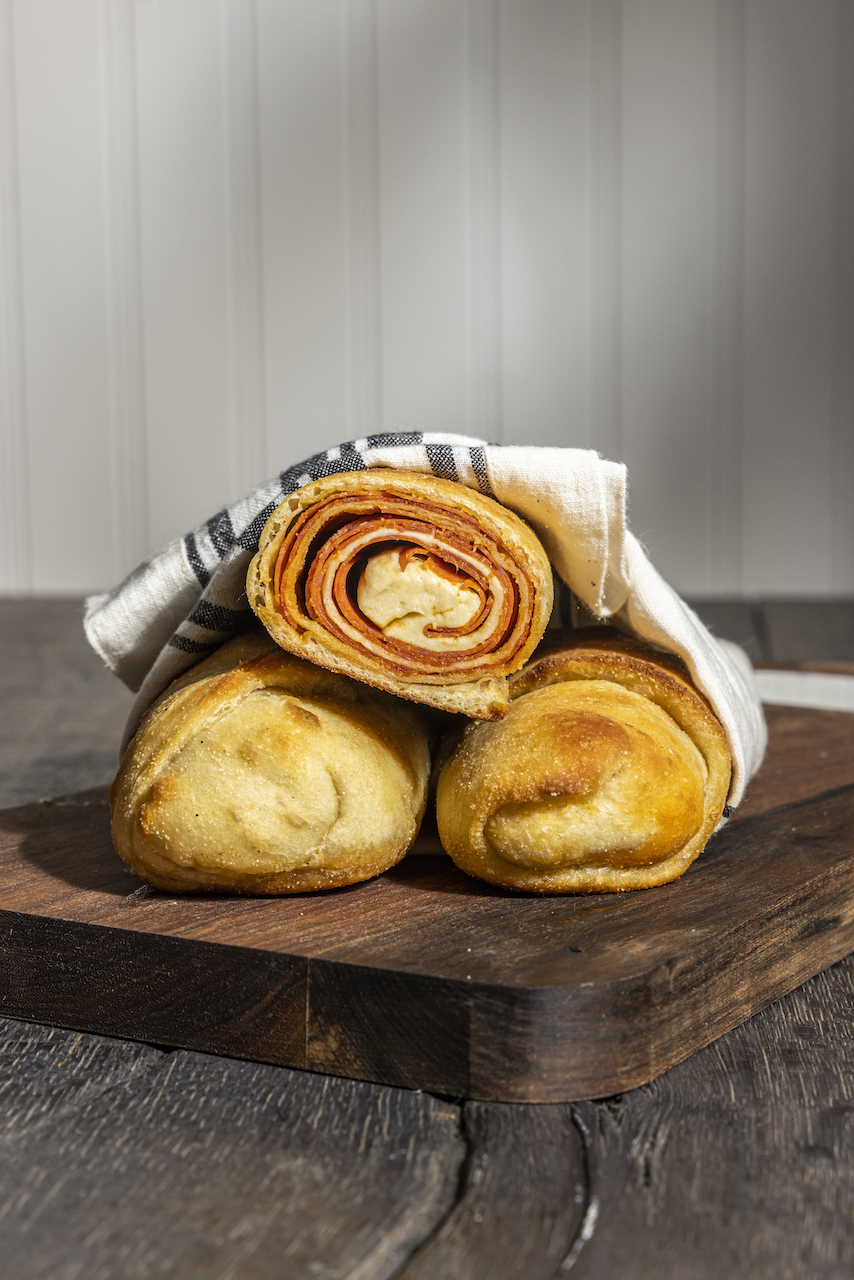
Pepperoni roll purists will eschew the addition of cheese, yet most will agree that the inclusion of cheese has been a change for the better. The most common types used are American, mozzarella, and pepper jack, with the latter being a crowd favorite.
Bread
Traditional pepperoni rolls are enrobed in a hard Italian bread, but more modern palates have gravitated toward a softer option like white bread. The best ones are freshly baked, light, and fluffy with plenty of moisture.
Pepperoni
This can be sticks, slices, ground, or a mix. But most importantly, the namesake ingredient must be abundant so the appropriate bread-to-meat ratio is met: not too bready, but not all pepperoni. A nice 50/50 mix of carbs and protein sets the foundation for perfection.
Oil
Those orange-ish spots on the bottom of the roll are the oil, herbs, and spices that have seeped out during the baking process. Many people will evaluate whether a pepperoni roll is worth purchasing by turning the package over and examining the oil-soaked bottom.
Additions
Peppers? Ramps? Tomato sauce? Olives? The options are unlimited. While maybe not traditional, extra tasty additions can add new, bold flavors to the pepperoni roll.
3 Pepperoni Rolls to Try in West Virginia
Country Club Bakery
Most commonly credited with commercializing the pepperoni roll, Country Club Bakery in Fairmont offers a traditional pepperoni roll by which all others are measured. At about 5½ inches long and 2½ inches wide, the pepperoni roll typically has two pockets filled with two to three sticks of pepperoni each.
The Donut Shop
This 24-hour bakery located in Buckhannon makes dozens of vanilla-glazed donuts every day, but their unique pepperoni roll draws visitors from miles away. Rather than using stick or sliced pepperoni, the Donut Shop uses ground pepperoni, which is enveloped in a soft roll and evenly dispersed throughout each bite. When ramps are in season, the shop stuffs those into their rolls to create garlicky-onion-flavored “ramparoni rolls.”
G&G Heritage Farm
Located in southern West Virginia, this farm sets up at fairs, festivals, and farmers markets where you can find their modern pepperoni rolls for sale. Their version starts with a soft dough and layers of sliced pepperoni, and then things are kicked up a notch with the addition of gouda and smoked gruyère cheeses. It may not be traditional, but it sure is tasty.
Keep Reading
In the Field
The Story Behind the Shrimp Po’ Boy
TLP heads to the coastal Louisiana to explore the origin story of the shrimp po’ boy, plus a few notable stops to sample the iconic sandwich.
In the Field
The Story Behind the Muffuletta
TLP heads to the New Orleans to explore the origin story of the muffuletta sandwich, plus a few of the must-visit spots to sample it today.
From the Magazine
The Spring Issue’s Guide to Tasty Travel
Editor in chief Erin Murray previews tasty travel topics from the latest issue of TLP, from Southern cheesemakers to six iconic sandwiches.
share
trending content
-
New Restaurants in Arkansas
-
Shrimp and Grits: A History
by Erin Byers Murray -
Tea Cakes, A Brief History
by TLP Editors -
Gullah Geechee Home Cooking
by Erin Byers Murray -
A Cajun Christmas Menu
by TLP Editors
More From In the Field
-
From Pop-Up To Brick-and-Mortar
-
The Return of the Lynnhaven Oyster | Listen
-
What’s On the Horizon for 2024
-
Sorelle: La Dolce Vita in Vogue
-
Keya and Co. Turning Sadness into Sugar





